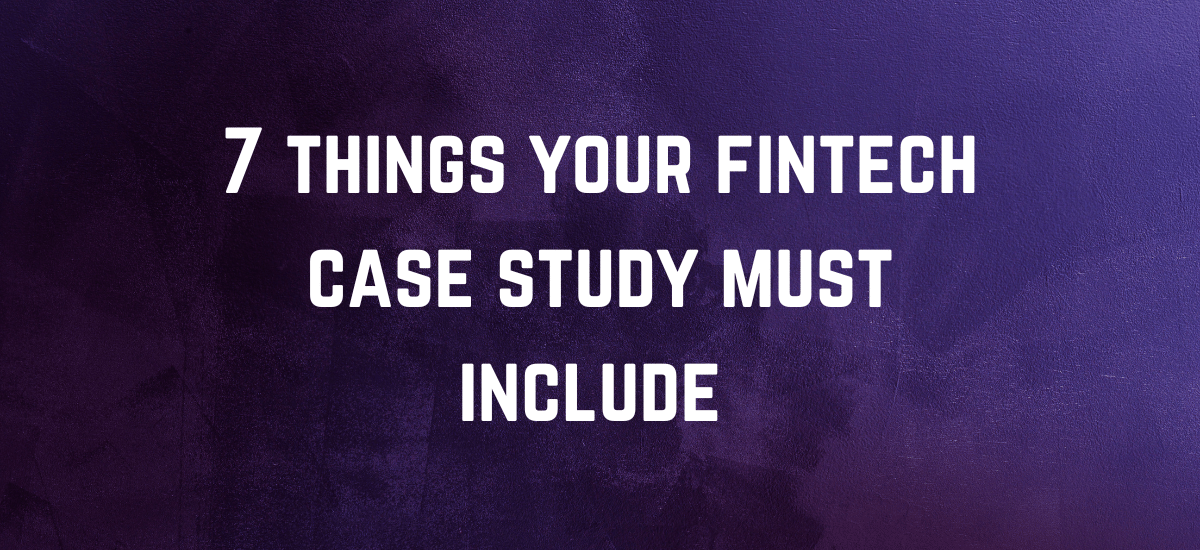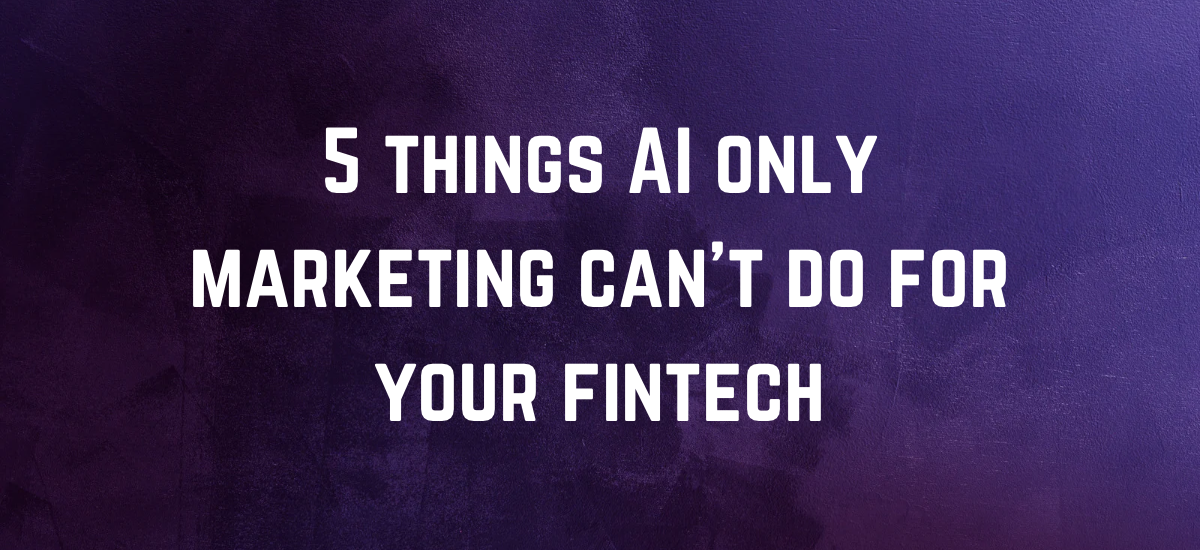by deborah
Share
by deborah
Share

When you run a fintech business, more than just an advanced host of products and solutions is required for success. You also need an exceptional marketing strategy that puts you at the forefront of the digital realm, ready to be discovered by your ideal audience.
Developing a fintech marketing strategy can be tricky — you need the right balance of professionalism and approachability for your strategy to be effective. Whether you use in-house marketing or work with a marketing agency, the key is to always keep the customer in mind.
In this article, we are talking about all things fintech marketing, including 4 key tricks for developing a highly effective fintech marketing strategy.
What is a Fintech Marketing Strategy?
A fintech marketing strategy is a marketing approach specifically designed with fintech in mind.
Fintech is a diverse industry filled with many different types of businesses and niches. Developing a marketing strategy for a fintech company requires close attention to be paid to what the company has to offer, who its target audience is, and how to make its products and solutions appealing to this audience.
Additionally, no two fintech marketing strategies are the same.
While one fintech company may be focused on B2B marketing, another may be more focused on B2C marketing. These types of marketing often have different priorities and tactics to be effective.
Long story short: You need a fintech marketing strategy that is tailored to your business’s exact needs.
4 Tricks for Developing a Strong Fintech Marketing Strategy
When it comes to developing your fintech marketing strategy, much depends on the specific needs of your business and the type of audience you are trying to attract.
In general, however, there are four key tricks that can benefit any fintech marketing strategy, be it B2B, B2C, or a combination of the two.
Let’s dive into these tricks and discuss why each is so important and useful:
1. Improve Your SEO Ranking
Search engine optimization (SEO) helps to boost your brand’s visibility on search engines like Google.
SEO is majorly important for not only brand awareness but also for driving organic traffic to your website and social platforms. According to Search Engine Journal research, 49% of marketers cite organic search traffic as the digital marketing channel with the highest ROI (return on investment).
Additionally, ranking high on a search engine drastically increases your chances of winning web visitors.
Google reports that 53% of consumers use the search engine to do research before making a purchase.
Moreover, websites that rank in the #1 spot for a search term in Google have an average click-through rate (CTR) of 27.6%. For reference, the average CTR for pay-per-click (PPC) ads is around 1.91% for PPC ads that appear on search engines.
One of the best ways to boost your SEO ranking is through regularly publishing fintech-related content on a blog. This gives you the best opportunity to cash in on a wider variety of keywords, enabling you to ascend the ranks for many different search terms on Google.
2. Ensure Your Marketing Materials are Optimized for Mobile Use
Did you know that roughly 75% of consumers agree that the ability to connect bank accounts with digital finance apps is essential? With more than 6,500 million smartphone users worldwide as of 2022, it has never been more crucial to optimize your website and marketing materials for mobile use.
Whether you have a traditional website, a mobile app, or both, the key is to ensure your marketing efforts are optimized for the channel you are delivering your marketing materials through.
Key components of mobile marketing optimization include:
- Designing a mobile-responsive website
- Utilizing data-sharing permissions to gain valuable customer insights
- Personalizing your marketing messaging based on customer data
- Keeping your text short and to-the-point
- Incorporating videos and images that are optimized for mobile viewing
- Testing different web designs, ads, and other materials
3. Connect with Millenials & Gen Z on Social Media
Millennials and Gen Z are two of the fastest-growing customer groups in fintech.
In a FIS Global study published in November 2022, 32% of Millennials and 22% of Gen Zs stated they are likely to use banking services provided by a fintech or neobank within the next 12 months. Comparatively, just 13% of Gen X and 5% of Baby Boomers stated the same likelihood.
Additionally, the study also reveals that 55% of Millennials and 48% of Gen Zs are likely to make a purchase directly through social media in the next year.
With these two generations making up a significant portion of fintech’s core audience, it is critically important to reach out to these groups through their preferred channels — aka, social media.
As for which social media platforms to use, the world is your oyster.
From more text-centric apps like Twitter and Facebook to picture and video-oriented apps like Instagram and TikTok, all social media platforms have their own advantages and merits. The key is to research your target audience to discover which platforms they favor.
4. Simplify Your Value Proposition
The easiest way to miss out on potential marketing gains is to overcomplicate your messaging.
Unless you are a fintech company aiming to work solely with other fintechs and financial institutions, your target audience is likely to lack the in-depth knowledge needed to understand your solutions.
One of your core marketing goals, thus, should be to simplify your value proposition so that the average consumer can easily comprehend who you are and what you offer.
For example, let’s say you offer a payments orchestration platform for merchants.
The average person — including B2B professionals — is not likely to have a clear understanding of what payments orchestration is. Rather than promoting a “payments orchestration platform,” you could instead promote an “end-to-end payment management system” or an “all-in-one payment platform.”
This doesn’t mean you should do away with the more technical term “payment orchestration” entirely. It simply means that your immediate messaging that a prospect first encounters should be simplified and eliminate confusing jargon, especially if your target audience is outside of the fintech industry.
Think of your value proposition as a hook used to catch the attention of your audience. Once you have their attention, then you can delve into the more in-depth and jargon-filled explanations of what you offer.
Final Thoughts: Eliminate Your Marketing Pains with Fintech Content
Keeping up with all the moving parts of marketing can be difficult, especially for fintech professionals who may not be as experienced in the world of marketing.
Here at Fintech Content, our team strives to alleviate marketing pains for fintech companies of all shapes and sizes. Our content marketing solution provides you with everything you need to establish a strong fintech marketing strategy, including:
- SEO-Driven Articles
- Articles
- Blogs
- eBooks
- Whitepaperes
Learn more about Fintech Content’s tailored solutions by contacting our team today.




